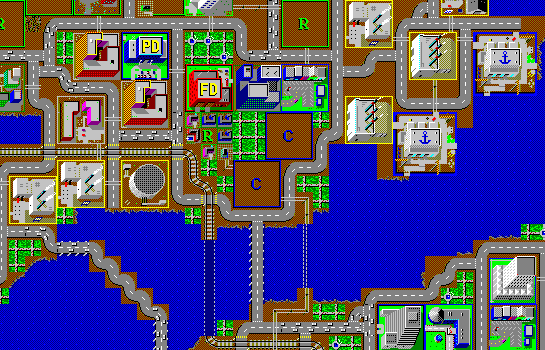When SimCity got serious
SimCity was inspired by real-world urban planning concepts, but not meant to serve as an accurate model of a city.
“SimCity was always meant to be a caricature of the way a city works, not a realistic model of the way a city works.”
– Will Wright, SimCity designer
The designers didn’t want to create professional simulations, but they did from 1992-1994. Virtually none of the work done during this time period was made public. This article aims to compile the story of Maxis Business Simulations and their privately developed software.
Delta Logic
Long story short, John Hiles started Delta Logic. He wanted to know more about artificial intelligence, and toyed with agent-based models (Boids).

Meanwhile, at Maxis, SimCity was selling incredibly well. Companies became interested, wanting to develop simulations of other systems.
“We were approached by a number of companies saying, ‘Hey that’s great! If you can do a city like that, we want you to do SimPizzaHut, or SimWhatever.’ We thought these things were so weird that we said no, but they kept coming in. So at some point, as we got big enough, we decided to give it a go.”
– Will Wright
John Hiles was aware of SimCity, and wanted to team up with Maxis to mix his software with the “fun” side of the software projects like SimCity. So they did, and their first project was for Chevron, who wanted to develop a game about an oil refinery.
SimRefinery
The goal here was to teach employees about the complexities of operating oil refineries in an interactive, fun way. Chevron paid $75,000 for a prototype of the refinery simulator.